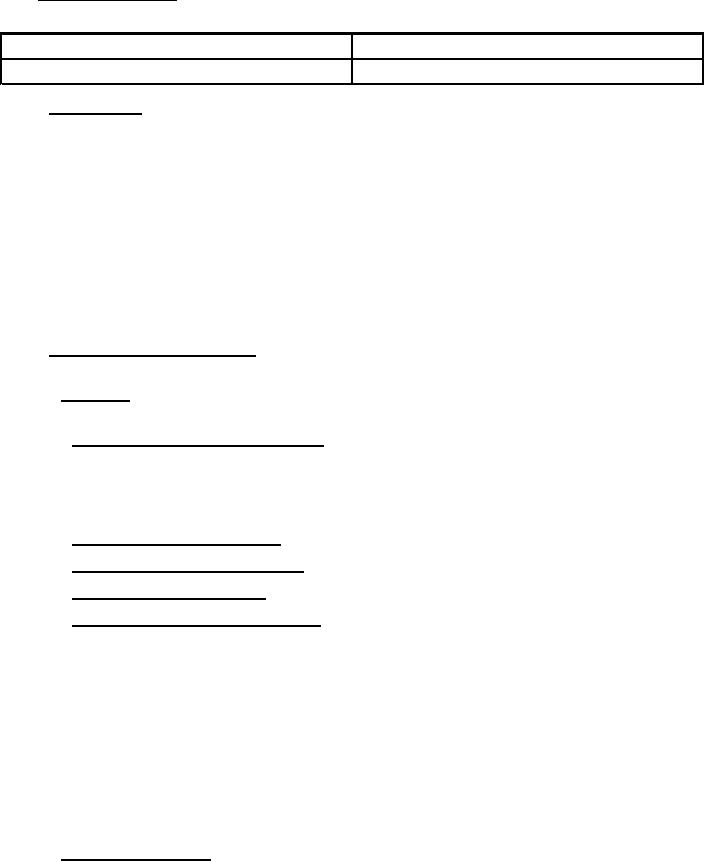
MIL-DTL-87158C
3.12 Chapter 8 through n. These chapters shall be numbered consecutively by aircraft zones, and each
chapter shall contain a description and illustration(s) of that zone. Each chapter shall include the following:
Structures assessment
Section I
System assessment
Section II
3.12.1 Safety factors. Analysis supporting ABDAR structural repairs shall be based on ultimate strength.
Repairs shall have stiffness that is compatible with the original structure. However, service life, corrosion,
and aesthetic considerations may be overlooked in exchange for a rapid repair procedure. Strength related
calculations, for the unrepaired structure, shall be made to obtain maximum utilization under wartime
conditions, and accommodate worst case contingencies. Calculations shall be made to determine the static
strength of the damaged and unrepaired structure. Operation of the aircraft shall be restricted to two-thirds
of that strength, or to restriction engendered by damage tolerance residual strength considerations, whichever
is lower. Safety of light primary structures shall provide for adequate residual strength in the presence of
cracks from damage remaining in the structures. The size and types of remaining damage, that are to be
assumed, shall be established for each primary structural member in each zone, for each damage category.
Structures with the assumed remaining damage shall be capable of sustaining limit load, or 1.2 times the
maximum load associated with any operating restriction. Care shall be exercised to assure that deformation,
that would degrade the load carrying or operating capability, shall not occur at the operational restriction.
3.12.2 Section I, structures assessment. This section shall contain a brief description of the structure, and
shall include illustrations of external and internal members in each zone.
3.12.2.1 Categories. Five separate categories shall be used to categorize all external and internal structural
members as follows (see Figure 5).
3.12.2.1.1 Category I, primary airframe structure. These members shall include, but are not limited to:
main longerons, bulkheads, spars and ribs; structural torque boxes in highly stressed areas; stress panels
which serve to stabilize tension and compression loads between primary load carrying members; and any
group of structural members in which a single failure may result in the immediate loss of an aircraft at the
maximum expected load. For this category, limits shall be listed for all three damage classes (see 6.4).
3.12.2.1.2 Category II, secondary structure. Limits shall be listed for all three damage classes (see 6.5).
3.12.2.1.3 Category III, nonessential structure. (see 6.6)
3.12.2.1.4 Category IV, special structure. Limits shall be listed for all three damage classes (see 6.7).
3.12.2.1.5 Category V, repair restrained structure. Limits shall be listed for A and C damage classes. The
three groups shown below are examples of Category V structures (see 6.8).
(1) Group 1. Complex machined and forged components used in construction of the airframe.
Components such as splice plates, attachments, and irregular shaped segments of Category I
structures. Fracture and fatigue critical areas shall be identiied for these components.
(2) Group 2. Attachment ittings, supports, etc., that transmit high loads onto primary structural
members; especially attachment ittings that transmit high vibration loads such as engine
vibration loads.
(3) Group 3. All essential mechanical systems required for airworthiness, machined or forged: gears,
screw jackets, actuators, etc., and all nonrepairable bell cranks, gear casing, and component
mounting plates.
3.12.2.2 Illustrations and tables. Each structural illustration shall consist of a coded orthographic view
drawing and table, depicting index number, nomenclature, material, damage class limitations, reference for
repair, and remarks. The code shall include an index number and category numbers identifying each item as
required. In conjunction with the category number, external illustrations shall use shading as indicated.
Internal structural illustrations may use shading, if it does not detract from, or obscure details (see Figure 5).
In order to simplify tables, nonessential (Category III) members need not be addressed.
6
For Parts Inquires call Parts Hangar, Inc (727) 493-0744
© Copyright 2015 Integrated Publishing, Inc.
A Service Disabled Veteran Owned Small Business